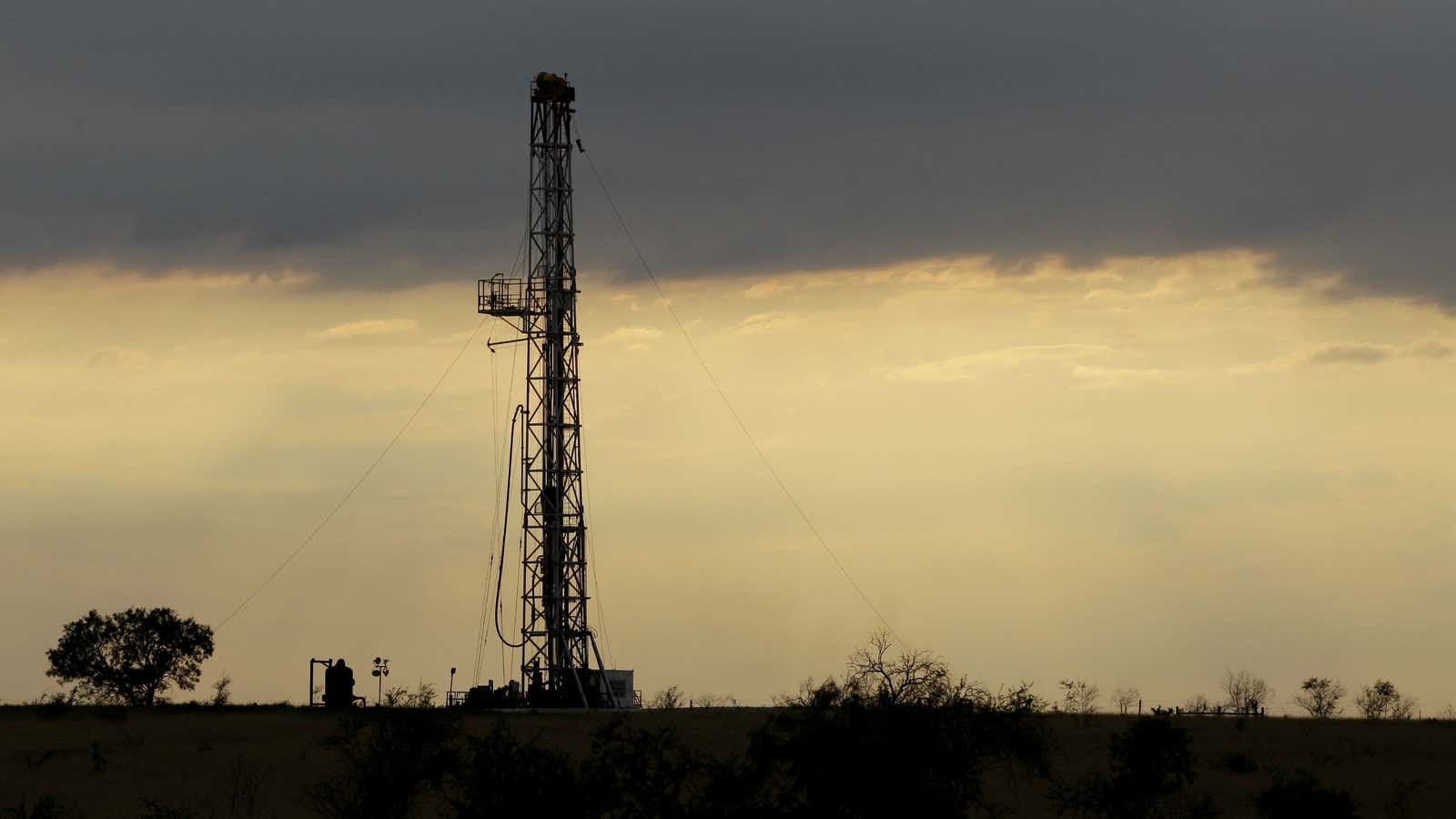Oil attracts a super-smart crowd—peak-oilers and oil bulls alike have both their vapid ideologues and ragingly insightful observers. So it is with those mulling the multitude of studies over the last year (such as this much-cited one) forecasting a renewed age of fossil fuel abundance. A global surge of oil and gas discoveries leads our list of the top geopolitical events of 2012. But not everyone is convinced. Among those pushing back is Steven Kopits, an analyst with Douglas Westwood. “I still don’t know where you get this ‘awash in oil’ stuff,” Kopits writes. In a followup, he says, “Our models see the world economy as oil-constrained.”
We have laid out both cases over the year, but it is worth returning to the argument against fossil fuel exuberance. So what is it?
In a surplus, prices should tank–but haven’t
Kopits cites 2012, when global oil production rose by 1.9%, demand in developed countries dived and, given the law of supply and demand, should have combined to push down prices—but didn’t. Instead, Brent oil, the international benchmark, remained persistently over $100 a barrel. “So you can have decent supply growth, declining OECD oil consumption, and no impact on really elevated oil prices,” Kopits notes.
Our year-end piece cited a forecast from PFC Energy that spare production capacity—the cushion of surplus oil that can be pumped at once in an emergency, and also the key determinant of oil prices—will more than quadruple by 2020 to nine million barrels a day. But Kopits rejects the prediction flatly. More oil will be drilled in the US, Iraq and Canada, and demand in developed countries will continue to drop, he says. But much of that gain will be eaten up by a combination of a surge in Chinese demand and the axiom that oilfield production naturally declines over time. For instance, Brazilian oil production will be down in 2012 because new oilfield production is not coming on line fast enough to overcome an 11% natural decline rate. “And Brazil is the hope of the offshore world!” Kopits said.
OPEC nations could theoretically build more oil production capacity, but for local political and economic reasons they do not, Kopits notes. He forecasts spare capacity remaining about the same in 2020 as now, or about 2 million barrels a day.
Watch companies, not forecasters
Finally, Kopits argues, look at what oil companies are doing—investing in highly risky production and refining capability, suggesting their own view of a future of tight supply—rather than the rosy picture that forecasters are painting. Just this year, Carlyle invested in Sunoco’s Philadelphia refinery, and Delta Airlines bought a big refinery in Trainer, Pennsylvania. China’s Cnooc and Malaysia’s Petronas both signed billion-dollar oil deals in Canada. Shell began to drill offshore from Alaska, and plans to return again next year. BP is developing much more robust technology for offshore production.
“You know, Delta didn’t buy the refinery because it thought the world was going to be awash in oil,” Kopits said. “China is not looking to buy Nexen because it thinks oil sands will be superfluous.” The others did not do their deeps because they “think it won’t be needed.” These players in the oil game believe the market will be tight for years to come.




